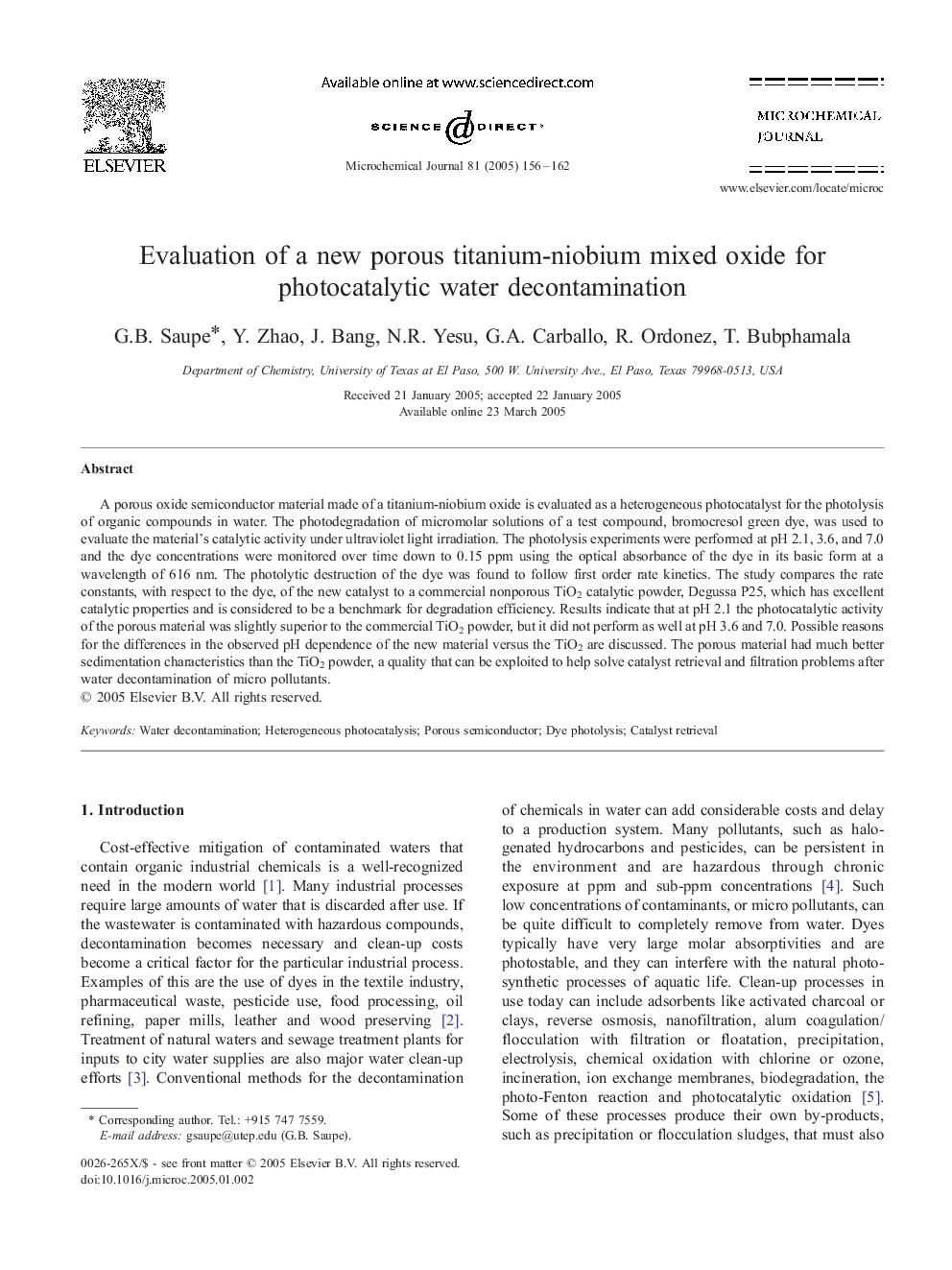| Article ID | Journal | Published Year | Pages | File Type |
|---|---|---|---|---|
| 10557232 | Microchemical Journal | 2005 | 7 Pages |
Abstract
A porous oxide semiconductor material made of a titanium-niobium oxide is evaluated as a heterogeneous photocatalyst for the photolysis of organic compounds in water. The photodegradation of micromolar solutions of a test compound, bromocresol green dye, was used to evaluate the material's catalytic activity under ultraviolet light irradiation. The photolysis experiments were performed at pH 2.1, 3.6, and 7.0 and the dye concentrations were monitored over time down to 0.15 ppm using the optical absorbance of the dye in its basic form at a wavelength of 616 nm. The photolytic destruction of the dye was found to follow first order rate kinetics. The study compares the rate constants, with respect to the dye, of the new catalyst to a commercial nonporous TiO2 catalytic powder, Degussa P25, which has excellent catalytic properties and is considered to be a benchmark for degradation efficiency. Results indicate that at pH 2.1 the photocatalytic activity of the porous material was slightly superior to the commercial TiO2 powder, but it did not perform as well at pH 3.6 and 7.0. Possible reasons for the differences in the observed pH dependence of the new material versus the TiO2 are discussed. The porous material had much better sedimentation characteristics than the TiO2 powder, a quality that can be exploited to help solve catalyst retrieval and filtration problems after water decontamination of micro pollutants.
Related Topics
Physical Sciences and Engineering
Chemistry
Analytical Chemistry
Authors
G.B. Saupe, Y. Zhao, J. Bang, N.R. Yesu, G.A. Carballo, R. Ordonez, T. Bubphamala,
